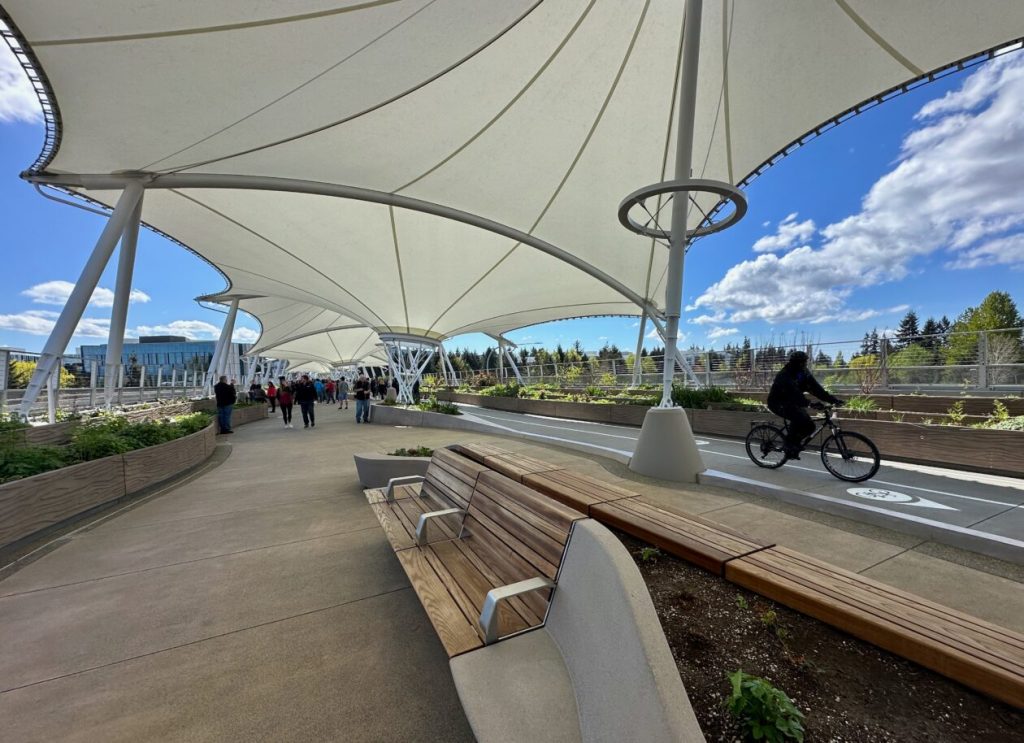The Redmond Technology Station Bridge officially opened in Redmond, Washington, providing a safer and greener way to move Microsoft’s employees and other commuters around the area. The bridge spans over 20 lanes of roadway and two sets of light rail tracks, making it a crucial connection between Microsoft’s old and new campuses. Designed by AECOM and engineered by Kiewit Engineering Group, the bridge features a wide walking path, two bike lanes, benches, and native Northwest plantings along its sides. Microsoft paid for the construction of the bridge and is partnering with the City of Redmond to maintain it.
The opening of the bridge is aimed at making it easier for employees to get to work, potentially luring remote or hybrid workers back to the office. It is also seen as a recruitment tool for Microsoft in the competitive regional tech talent market. The bridge connects to Sound Transit’s new Redmond Technology light rail station, the SR 520 transit “flyer” stop, a regional bike trail, and Microsoft’s campus, which is undergoing a major refresh to make it more pedestrian and bike-friendly. The bridge is part of Microsoft’s commitment to the local community and is a symbol of their dedication to improving transportation infrastructure in the region.
The official opening celebration of the bridge coincided with the opening of the new light rail station on Saturday, the last of eight stations on a 6 1/2-mile stretch of rail between Bellevue and Redmond. The long-term plan is to connect the line to Seattle once light rail starts running across Lake Washington on I-90. Various officials including Redmond Mayor Angela Birney, King County Executive Dow Constantine, and Sound Transit Interim CEO Goran Sparrman praised the collaboration between Microsoft, local government agencies, and the Washington State Department of Transportation in making the bridge a reality.
On the day of the opening, a large red ribbon was cut, officially welcoming pedestrians and cyclists to use the bridge. Microsoft workers were seen crossing the bridge, taking selfies, and enjoying the structure that connects the east and west campuses. The bridge provides a convenient 2-minute walk for employees moving between the different locations on Microsoft’s campus, improving accessibility and connectivity. For security guard Ron James, who rides his bike around 60 hours per week, the bridge will make movement between different campus buildings much easier and efficient.
As traffic continued to flow beneath the bridge, workers and commuters enjoyed the floating respite provided by the structure. The various amenities on the bridge, such as benches and native plantings, offer a peaceful environment for those crossing from one side to the other. The opening of the bridge marks an important milestone in creating a multimodal transportation system that supports the region’s economy and quality of life. Microsoft’s commitment to the local community is symbolized by the bridge and its role in improving transportation infrastructure in the area.


